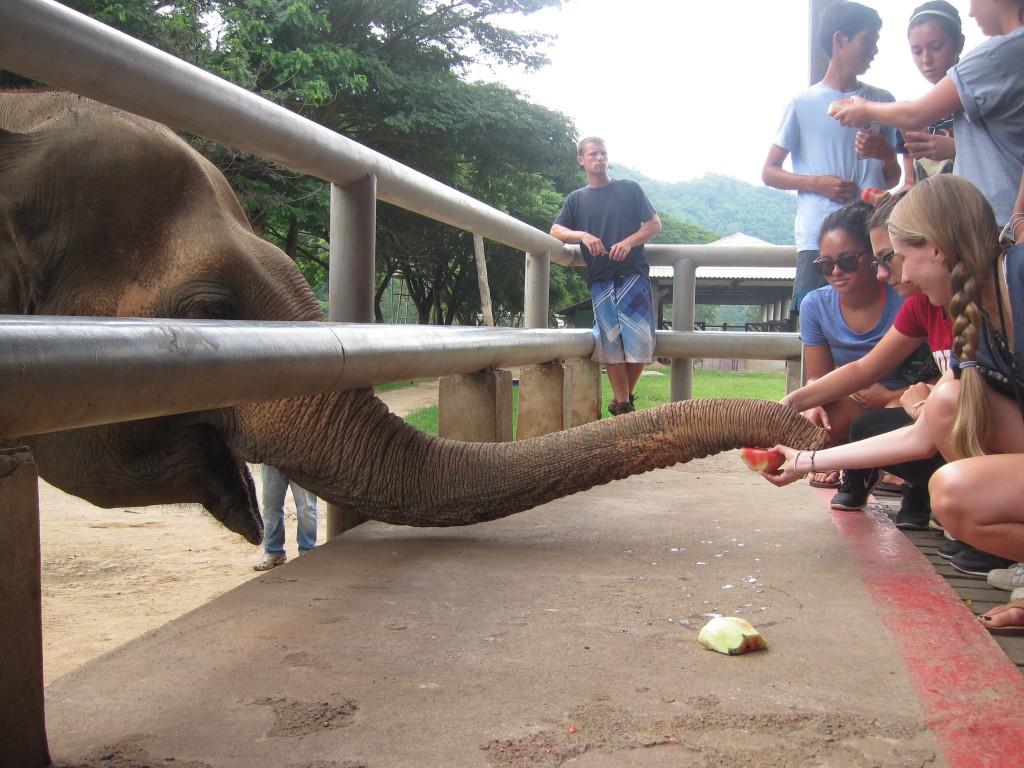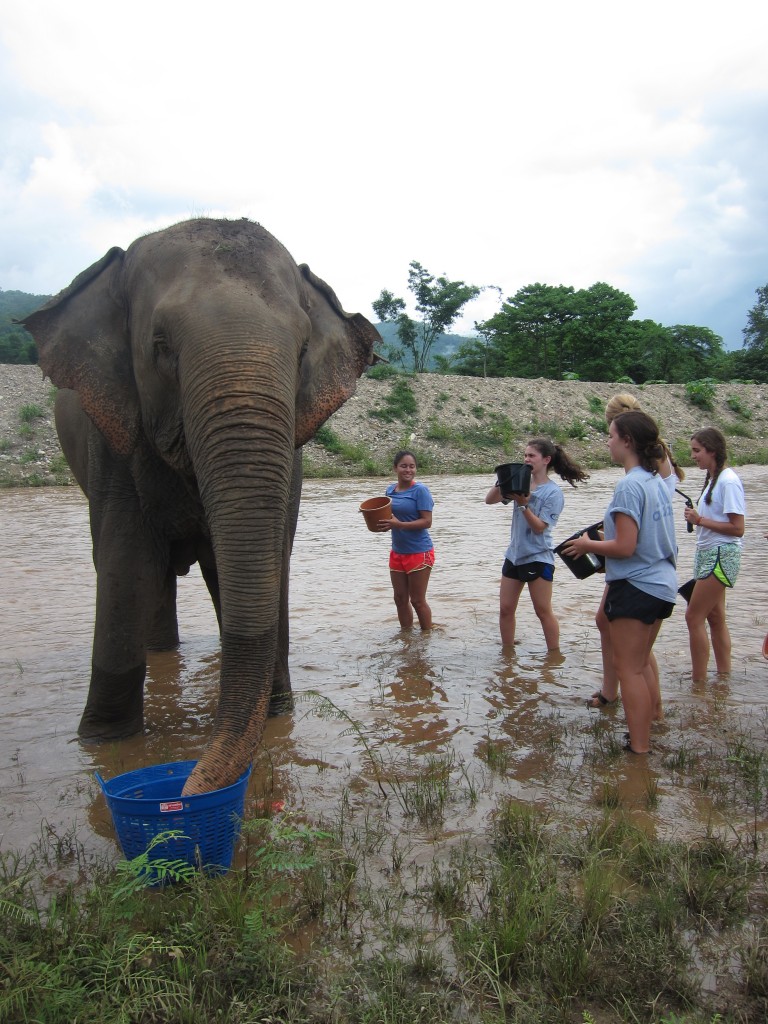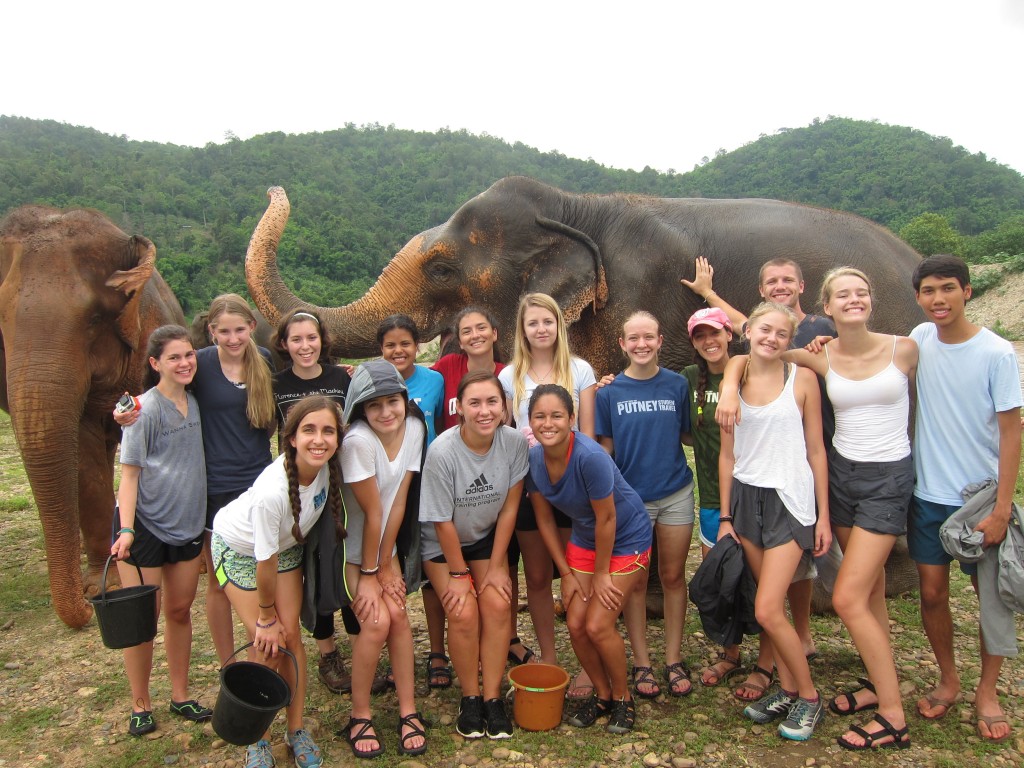As the role of elephants in the Thai economy and culture has evolved in recent decades, a number of elephant camps and centers have been created to accommodate these creatures as their livelihoods have disappeared. Elephants were once heavily used in the logging industry for transportation, and even in war in ancient times, but Thais are struggling to find homes or economic uses for elephants in modern society. It has become commonplace to see young elephants walking the city streets in busy tourist centers, either as a tourist attraction begging for cash or being ridden, both of which are harmful to the animals. Elephants are extremely sensitive to sound and vibration, and the bustling streets of Thailand’s populated areas are a complete sensory overload for them. In addition, the process of taming a young elephant to allow humans to ride them requires extremely traumatic training exercises that include sleep and food deprivation, as well as torture.
Elephant Nature Park is a conservation based initiative designed to protect and save elephants from this abuse, and this is where we chose to have our hands-on experience with these beautiful giants. The park is located in a region similar to their natural habitat: an open river valley oasis in the highlands of northern Thailand. Here the elephants enjoy a natural, family-based lifestyle just as they would in the wild where they can come and go as they please, eating, swimming, and mud-bathing at their leisure. In this sanctuary, the caring trainers keep 30 elephants of all ages, many of which have been saved from painful lives of logging, servitude, and tourists riding on their backs. Our students engaged with these friendly creatures and observed, fed, and bathed them. It was an unforgettable experience for everyone involved, and we can all rest easy knowing we contributed to the healthy continuance of their natural lifestyles.
– Anna & Ryan
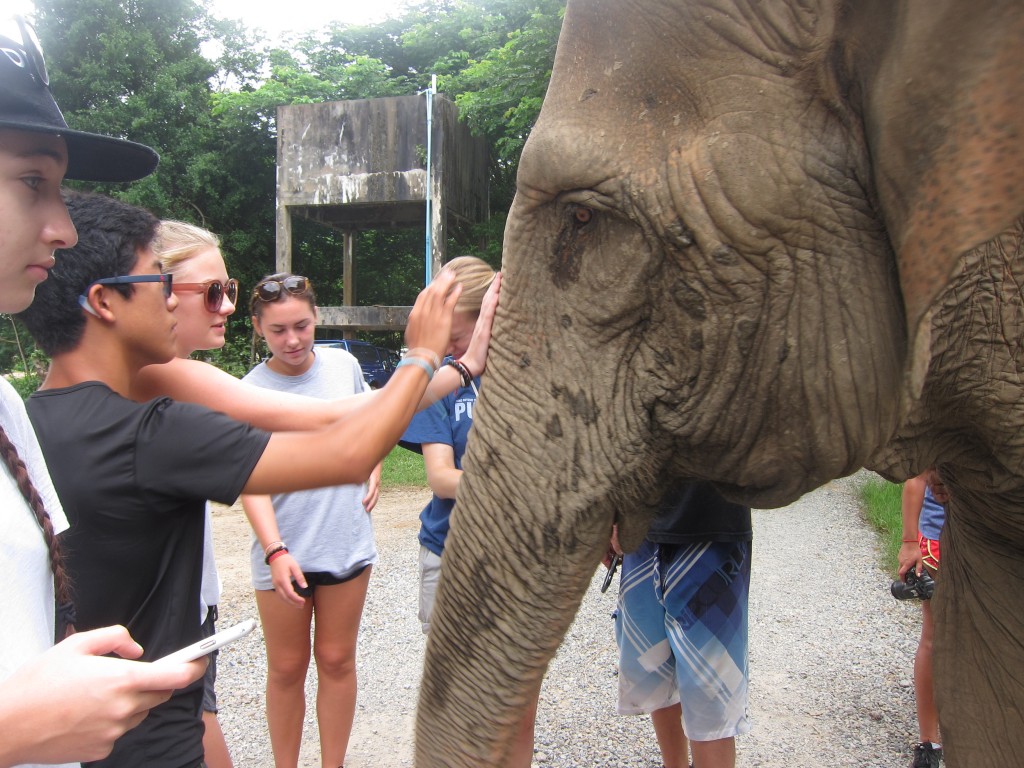
The group learned the life history of each elephant we encountered in the park. All of the elephants carried their own unique and, unfortunately, traumatic histories. The sanctuary is equipped to help them recover both mentally and physically.

The elephants are free to roam throughout the valley for the majority of each day, and visitors are invited to observe their natural behaviors.
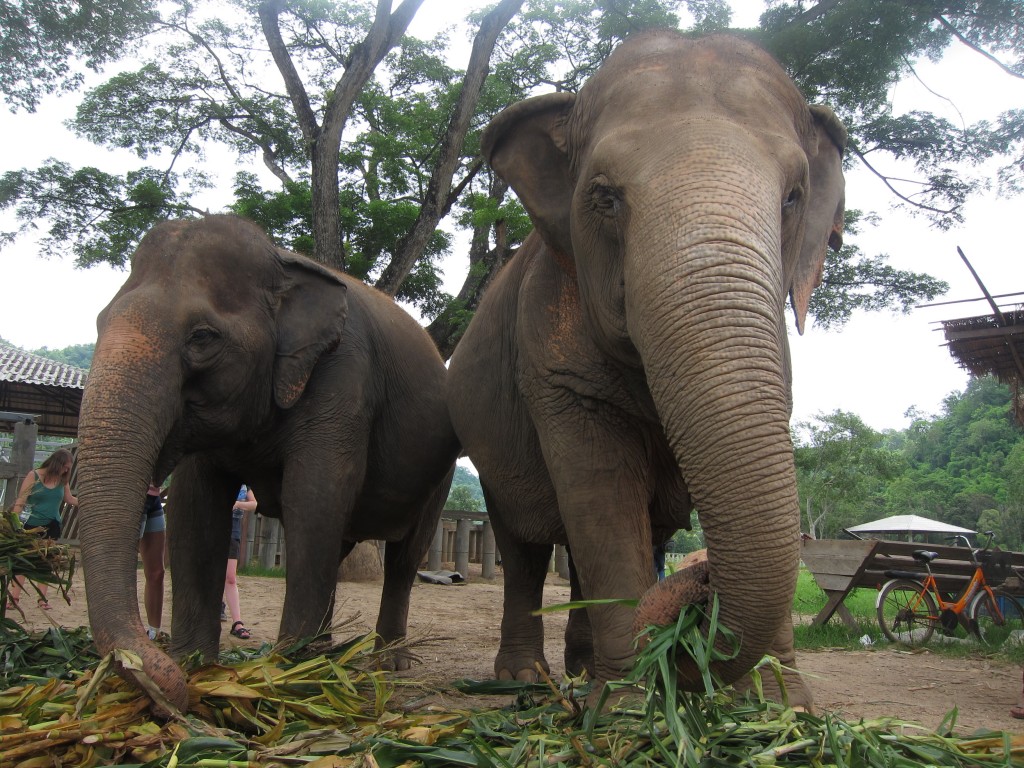
We learned about the incredibly healthy (and enormous!) diets that elephants require to lead healthy lives.
